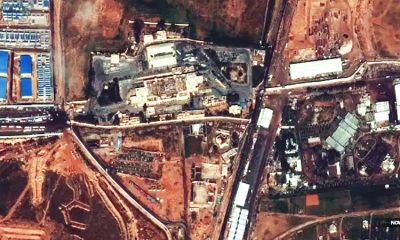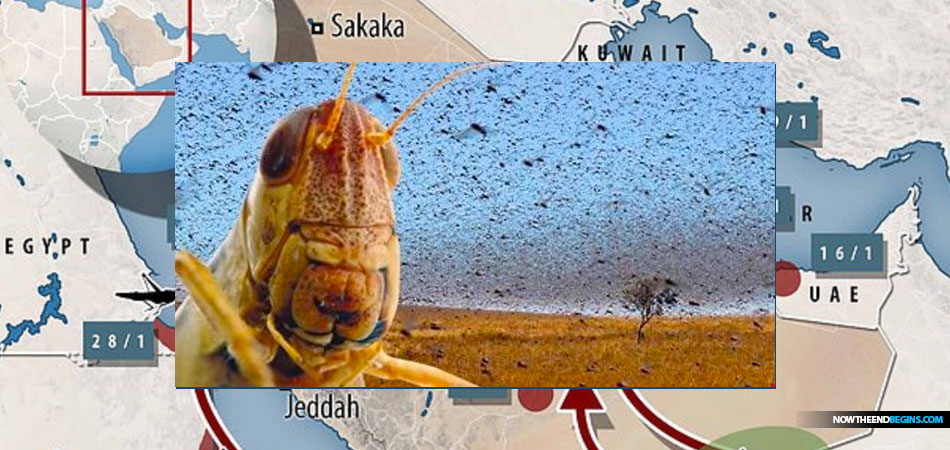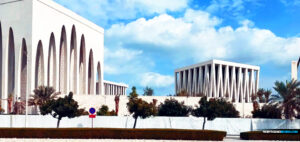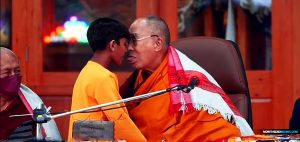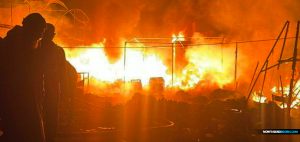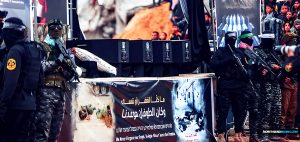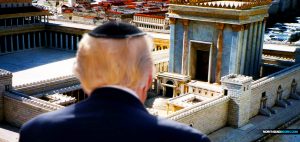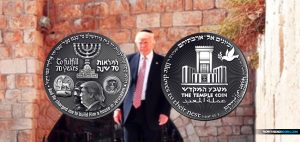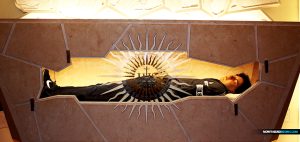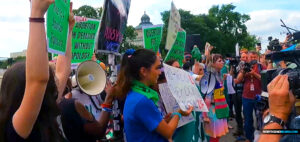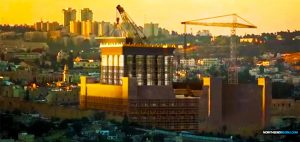Al-Qaeda
Nearly 1,000 Dead As Egypt Wages Civil War Against Muslim Brotherhood

Yasmine Ahmed’s two brothers had been trapped in the siege for over 12 hours. Packed into a sweltering back room barricaded with chairs and wooden tables, they had been cooped up alongside hundreds of panicking Islamists and the decomposing corpses from another weekend of violence
In the main prayer hall of the Al-Fath mosque, its grubby carpet littered with discarded shreds of cotton wool and surgical pads, an army commander huddled in a circle with his troops who, it was claimed, had only entered the building to clear it of supporters of toppled President, Mohamed Morsi as well as to protect innocent worshippers from angry mobs gathering outside.
Hundreds of locals were crammed against the pointed steel gates of the mosque courtyard. Many were in no mood to forgive those trapped inside; in the minds of some Egyptians, the Morsi supporters have become little more than “terrorist” outlaws.
“Their fate is not in my hands now,” said Yasmine, 20, a college student. “The army and the police think the people trapped inside are terrorists. But they are not. What we have now is chaos. There is chaos between all the Egyptian people.
The fear and anxiety were palpable. Weeping relatives tramped around the prayer hall, while jumpy police officers toted their Kalashnikovs in one hand, wide-eyed and frantically chewing gum.
Adding to the sense of confusion, dozens of civilians had also managed to gain access to the building. All the while, hundreds of Morsi supporters – who had sought sanctuary in the mosque following the gunfights that erupted in nearby Ramses Square on Friday – shouted and yelled out from behind their barricades.
At around 12.40pm, the situation suddenly deteriorated. Heavy bursts of gunfire began crackling outside the mosque. “It’s the Muslim Brothers,” shouted a boy in his late teens. “They’re firing at us from above.”
Panic gripped the prayer hall. Dozens of black-clad men from the security services ran for shelter under the windows of the eastern wall. Others squatted behind thick pillars as the live rounds swooshed around outside the mosque.
One policeman ran to prod his gun through a smashed window in the western wall. His darting eyes searched for the source of the shooting. Seeing no target, he stepped away.
Suddenly a squad of armed police dashed to the corridor leading to the barricaded back room and lined themselves against the wall. Pointing their gun barrels skyward, they poised themselves to end the siege. Groups of civilians, relatives and other armed police ran to take cover next to the eastern wall.
Just then someone pointed to the windows on a second floor overlooking the prayer hall. “There are people upstairs,” he screamed. A moment later there was a flash and a small explosion in the centre of the room. Soldiers and civilians started screaming. A cloud of pale smoke dissipated around the hall.
Seconds later there was another loud boom, this time from the direction of the corridor leading towards the barricaded Islamists. Panic erupted as those inside the mosque began fleeing for the door. A senior police officer ordered people to leave, furiously waving an arm as he stomped through the prayer hall with a Kalashnikov in his right hand.
Outside, the scores of civilians who had gained access to the main courtyard cowered against the mosque walls as heavy bursts of live ammunition clattered around Ramses Square. Eyewitnesses reported seeing gunshots being fired from the mosque’s minaret.
Amid the fear and confusion, angry civilians mobbed foreign journalists who had been reporting on the siege. One Western reporter was briefly knocked unconscious after being clubbed over the head with a stick. Soldiers fired shots in the air to scare away the attackers.
At least two journalists were rescued from angry locals by troops stationed in Ramses Square. Other reporters were also arrested or detained in Cairo yesterday. The Muslim Brotherhood, which won the presidency last year after decades of repression, looks in danger of being expunged again from Egypt’s political life. Yesterday it was reported Egypt’s Prime Minister Hazem el-Beblawi has proposed disbanding the Muslim Brotherhood, raising the prospects of large-scale arrests if membership becomes outlawed.
It was also reported that Egyptian security forces yesterday arrested the brother of al-Qa’ida chief Ayman al-Zawahiri. Mohammed al-Zawahiri, leader of the ultraconservative Jihadi Salafist group, was detained at a checkpoint in Giza. Said to be an ally of ousted President Morsi, Mohammed al-Zawahiri is accused of commanding Islamic insurgents in the Sinai peninsula.
The interim government, backed by an apparently irrepressible military establishment, has initiated a bloody war on political Islam. Successive massacres over the past six weeks have been so astonishingly brutal that nobody knows exactly how many people have been killed.
Even taking the conservative estimates of health officials, the bloodletting points to a country that is ripping itself apart. At least 600 dead after Wednesday’s massacre of Morsi supporters; more than 170 on Friday; hundreds more since the popular coup greeted with such jubilation by some on 4 July.
Nobody has been safe. Among the dead during Friday’s violence was Ammar Badie, the son of the Brotherhood’s Supreme Guide. On Wednesday, the daughter of Mohamed el-Beltagi, a leading Brotherhood official, was killed during the massacre. Mostafa Yacoub, said he had known 17-year-old Asmaa el-Beltagi and that she had grown distant from the Brotherhood ideology espoused by her father.
During violent demonstrations at the end of 2011 he said Asmaa had shared the streets with liberal and secular protesters who were battling the central security forces.
“She was young and wanted to develop her own thoughts,” said Mr Yacoub. “She did a lot of community work. She wanted to be open to other sides of society.”
Those hopes were exterminated on Wednesday when police bullets shredded the Islamist encampment in eastern Cairo.CIslamists have responded to the recent violence by attacking churches, Christian homes and businesses. The attacks confirm what many liberals have long suspected – that followers of political Islam are agents of intolerance and not fit to enjoy power in Egypt.
Yesterday’s reports that the authorities are considering ways to consign the Brotherhood to political oblivion are a natural consequence of such sentiment.
Even in Cairo, the city that breathes with a bustling vivacity, it feels as if it has died a death of sorts. As a result of the new 7pm curfew, the city centre is enveloped in a deathly pall of quiet by nightfall.
The roads that would usually be bursting with street hawkers and honking drivers are empty. Volunteers staffing civilian “checkpoints” – usually little more than a steel road barrier dragged into the street – check car boots and rummage through the passengers’ rucksacks.
For its 17 million inhabitants, the city can rarely have felt so alien. For the political map-makers of Egypt’s tortured transition, the future can hardly have seemed less uncertain. source – Independent UK

Al-Qaeda
Obama Administration ‘Loses’ Half Billion In Military Weaponry To al-Qaeda In Yemen
Pentagon officials cannot track the whereabouts of $500 million worth of military equipment the U.S. donated to Yemen since 2007 – raising alarms that the hardware may have ended up with al-Qaeda or Iranian-backed rebels.
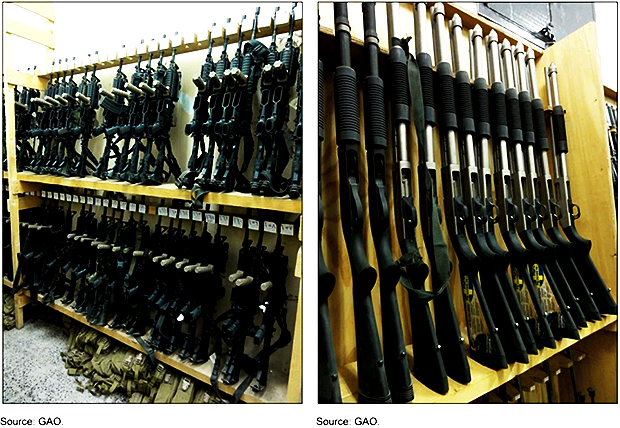
Pentagon officials cannot track the whereabouts of $500 million worth of military equipment the U.S. donated to Yemen since 2007 – raising alarms that the hardware may have ended up with al-Qaeda or Iranian-backed rebels.
Ever wonder how al-Qaeda and ISIS always have such advanced weaponry and military capabilities? Wonder no more! Obama gives it to them, that’s how they do it. Did you think it was a trick question?
U.S. officials said Tuesday that increasing instability in Yemen has made it impossible to keep tabs on donated equipment that includes small arms, ammunition, patrol boats and night-vision goggles, according to The Washington Post.

U.S. firearms supplied to the Interior Ministry in Yemen, which has received $500 million in aid from the United States since 2007 under an array of Defense Department and State Department programs. (Government Accountability Office)
“We have to assume it’s completely compromised and gone,” a legislative aide on Capitol Hill, speaking on the condition of anonymity, told The Post.
In January, Yemen’s government was overtaken by Iranian-backed Shiite Houthi rebels. The rebels are increasingly taking over military bases.
Since then, the U.S. closed its embassy in Yemen and the Defense Department has stopped delivering equipment to the country, including a shipment of $125 million worth of military products scheduled to be delivered earlier this year.
This is the equipment no one can find, The Post reports:
- 1,250,000 rounds of ammunition
- 200 Glock 9 mm pistols
- 200 M-4 rifles
- 4 Huey II helicopters
- 2 Cessna 208 transport and surveillance aircraft
- 2 coastal patrol boats
- 1 CN-235 transport and surveillance aircraft
- 4 hand-launched Raven drones
- 160 Humvees
Al-Qaeda
Al-Qaeda Affiliate Threatens To Kill American Hostage Luke Somers
Luke Somers, a 33-year-old photojournalist, was abducted in 2013 in Sanaa, the capital of Yemen, according to media reports. In a YouTube video published Wednesday, he says he is certain his “life is in danger.”
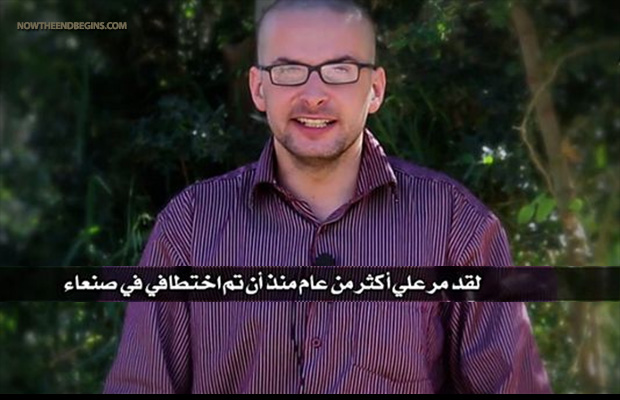
An al-Qaeda affiliate has threatened to kill an American hostage in three days if the U.S. government does not respond to the group’s demands, according to terrorist monitoring group Site Intelligence Group.
Luke Somers, a 33-year-old photojournalist, was abducted in 2013 in Sanaa, the capital of Yemen, according to media reports. In a YouTube video published Wednesday, he says he is certain his “life is in danger.”

The video features an al-Qaeda official and a brief message from Somers – dressed in a purple shirt and with a shaved head – at the end. He notes that he was born in England but has American citizenship and lived in America for most of his life.
The al-Qaeda operative who speaks throughout much of the video and threatens that Somers will meet his “inevitable fate” if the group’s demands are not met is Nasser bin Ali al-Ansi of the Arabian Peninsula affiliate, Site Intelligence Group said. The video does not list what those demands are, but al-Ansi says Washington is “aware” of them.
“It’s now been well over a year since I’ve been kidnapped in Sanaa,” Somers said in the footage. “Basically, I’m looking for any help that can get me out of this situation. I’m certain that my life is in danger. So as I sit here now, I ask, if anything can be done, please let it be done. Thank you very much.”
Somers was kidnapped in September 2013 from a street in Sanaa, where he had worked as a photojournalist for the Yemen Times, the Associated Press said.
Read the rest of this story on USA Today…
Al-Qaeda
Islamic Terrorists Foster Jihad With Over 90 Tweets Per Minute On Twitter
Abdulmunim Al-Mushawah revealed that about 129,600 tweets were posted by accounts affiliated to terror groups in October 2014. As a result, at least 500 accounts believed to have been run by terrorists were deactivated.
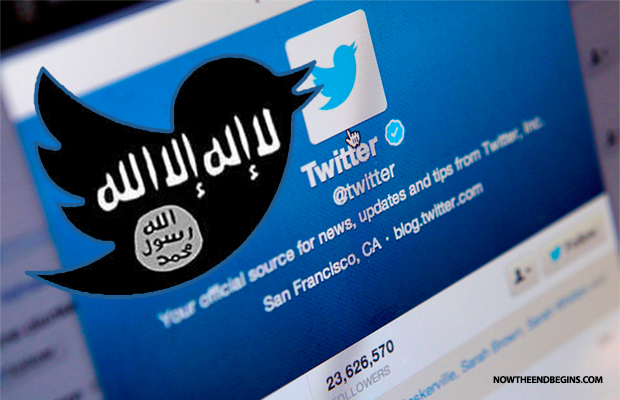
Islamic terror groups post at least 90 tweets every minute, a new report has found
The data was revealed in a survey conducted by the Saudi-based Sakina, an independent, non-governmental organisation created to engage in dialogue online as a way to combat internet radicalization.

Results showed that terror groups such as the Syrian Islamic Liberation Front, Al-Nusra Front and Islamic State (ISIS) use social media to recruit new members and to spread their propaganda.
Abdulmunim Al-Mushawah, head of the organisation, revealed that about 129,600 tweets were posted by accounts affiliated to terror groups in October 2014. As a result, at least 500 accounts believed to have been run by terrorists were deactivated.
Al-Mushawah urged for a censorship committee to be put in place in order to monitor tweets that could be written to promote insurgents’ propaganda. “The nature of the extremist can be understood by analysing his posts, identifying his social circle and understanding his internal motives and history,” he was quoted by the Saudi Gazzette as saying.
“After understanding and recognising the type of extremist the person is, we can then follow the appropriate method of dialogue knowing that it is a lengthy and complicated process at times.
“The responsibility of protecting the general public from terrorist activities does not only lie with the official directorates. It is also the responsibility of the media, mosques and educational institutes,” he continued.
“Public awareness and guidance are the campaign’s top priorities because it is important to teach people how to face one problem without creating another.”
-

 George Soros8 years ago
George Soros8 years agoProof Of George Soros Nazi Past Finally Comes To Light With Discovery Of Forgotten Interview
-

 Election 20168 years ago
Election 20168 years agoDEAD POOL DIVA: Huma Abedin Kept Those Hillary Emails That The FBI Found In A Folder Marked ‘Life Insurance’
-

 Election 20168 years ago
Election 20168 years agoCrooked Hillary Campaign Used A Green Screen At Today’s Low Turnout Rally In Coconut Creek FL
-

 George Soros8 years ago
George Soros8 years agoSORE LOSER: George Soros Declares War On America As Violent MoveOn.Org Protests Fill The Streets
-

 Donald Trump8 years ago
Donald Trump8 years agoDonald Trump Will Be 70 Years, 7 Months And 7 Days Old On First Full Day In Office As President
-

 Headline News8 years ago
Headline News8 years agoIf Hillary Is Not Guilty, Then Why Are Her Supporters Asking Obama To Pardon Her? Hmm…
-

 Election 20169 years ago
Election 20169 years agoWikiLeaks Shows George Soros Controlling Vote With 16 States Using SmartMatic Voting Machines
-

 End Times8 years ago
End Times8 years agoFalse Teacher Beth Moore Endorses The Late Term Partial-Birth Abortion Candidate Crooked Hillary



